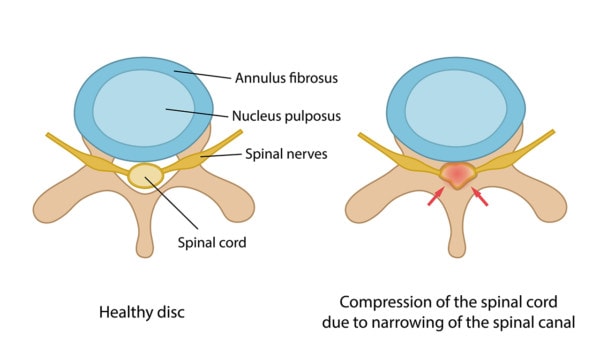New Study Raises Spinal Stenosis Surgery Questions…
It’s been an awful few years for the orthopedic surgical model of care. Outcome study after outcome study continues to fell sacred surgical cows like so many dominoes. The most recent surgical victim is spinal stenosis surgery with a new study showing that the patients that had it did no better in the long run than those who didn’t get the surgery. This brings up many spinal stenosis surgery questions, not the least of which is whether the surgery works and if not, why not?

Olga Bolbot/Shutterstock
Even for a physician, spinal stenosis is scary. You see an MRI that seems to show that the spinal cord or nerves are being compressed and you can conjure up any number of horrible things that could happen. In fact, I’ve seen hundreds of patients in the last 20 years who have been told by surgeons that they will become paralyzed if they were to get into a car crash or take a bad spill, which instantly sells a big surgery. In fact, I’ve had to talk quite a few off this proverbial ledge reminding them that their risk of becoming paralyzed in an accident just went from infinitesimally low to ridiculously low. In addition, spinal stenosis, unlike herniated discs, doesn’t usually respond long-term to epidural steroid injections, leaving many patients who believe their only option is surgery. However, a large study just looked at patients who were randomized to get the surgery or no surgery. The results aren’t pretty for spine surgeons.
The SPORT trial looked at spinal stenosis surgical candidates from 13 different academic centers in 11 U.S. states who had at least 3 months of symptoms. The study authors randomized patients to get either decompressive spinal surgery or non-surgical care. They also followed a group of patients that didn’t want to be randomized. While the surgery patients did better for the first 4 years, the benefit washed out beyond 4 years. So in the short term, surgery helped, but in the long run, both surgery and non-surgery patients ended up in the same place.
What’s interesting about this study is that based on the results, this is what surgeons should now tell spinal stenosis patients, “We can perform a big surgery with a pretty high complication rate compared to something like a knee surgery, you’ll feel better for a few years, but research shows that you’ll likely end up the same place as if you didn’t do the surgery”. However, instead, most will likely get a scary talk about how they may become paralyzed.
Why is this happening? Regardless of which surgical option you choose with spinal stenosis, you’re fixing one problem and creating another. So for example, if you go with decompressive laminectomy, while you’re opening up space for the nerves, you’re also removing the structure that was stabilizing the spine, causing instability that will eventually just cause the body to form more bone spurs to stabilize that area-leading to a new problem. If you go the decpompression and fusion route where the area for the nerves is opened up and then the operated segments are bolted together, the areas above and below the fusion will get overloaded and begin to degrade.
The upshot? The outcomes of traditional orthopedic bread and butter procedures are on increasingly shaky ground. One has to wonder how long major insurers and large governments will continue covering these procedures and when they’ll just refuse to reimburse for them? In the meantime, if you have spinal stenosis, you may want to think twice about non-surgical alternatives before pulling the trigger on surgery!

NOTE: This blog post provides general information to help the reader better understand regenerative medicine, musculoskeletal health, and related subjects. All content provided in this blog, website, or any linked materials, including text, graphics, images, patient profiles, outcomes, and information, are not intended and should not be considered or used as a substitute for medical advice, diagnosis, or treatment. Please always consult with a professional and certified healthcare provider to discuss if a treatment is right for you.
